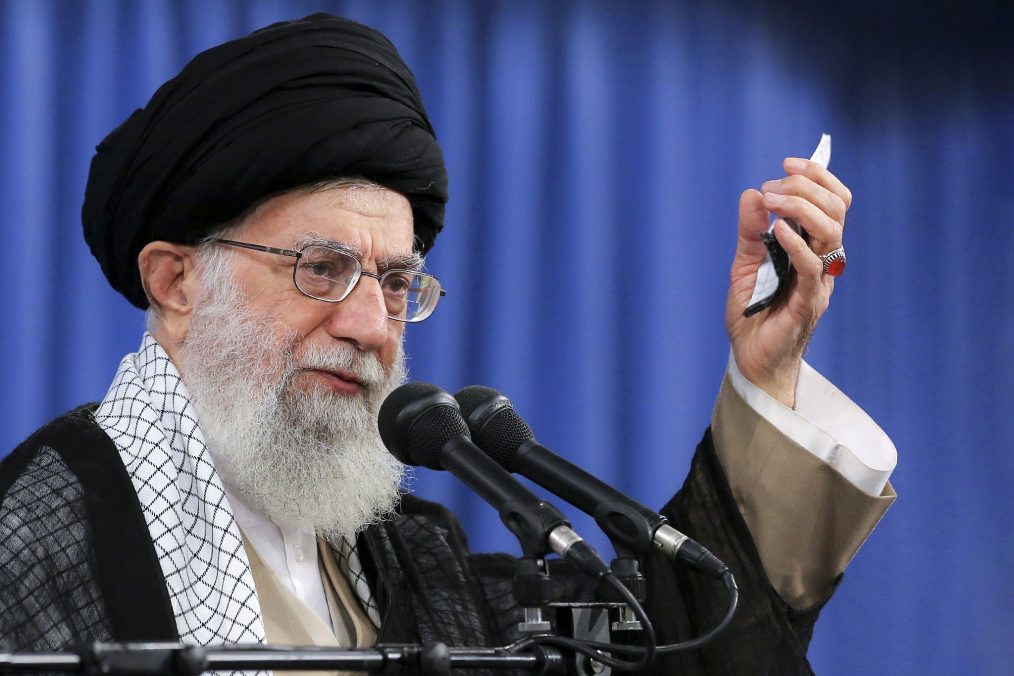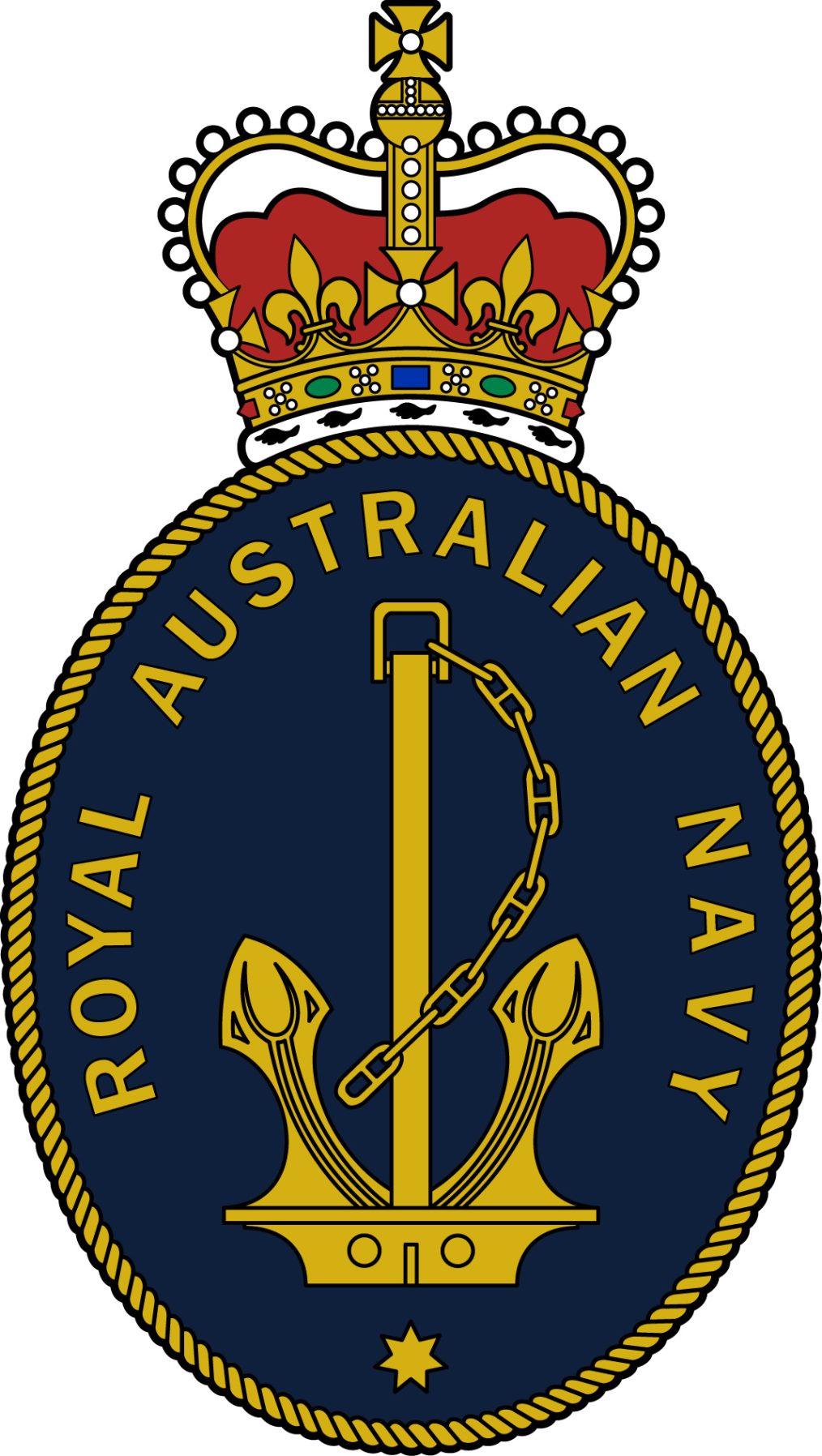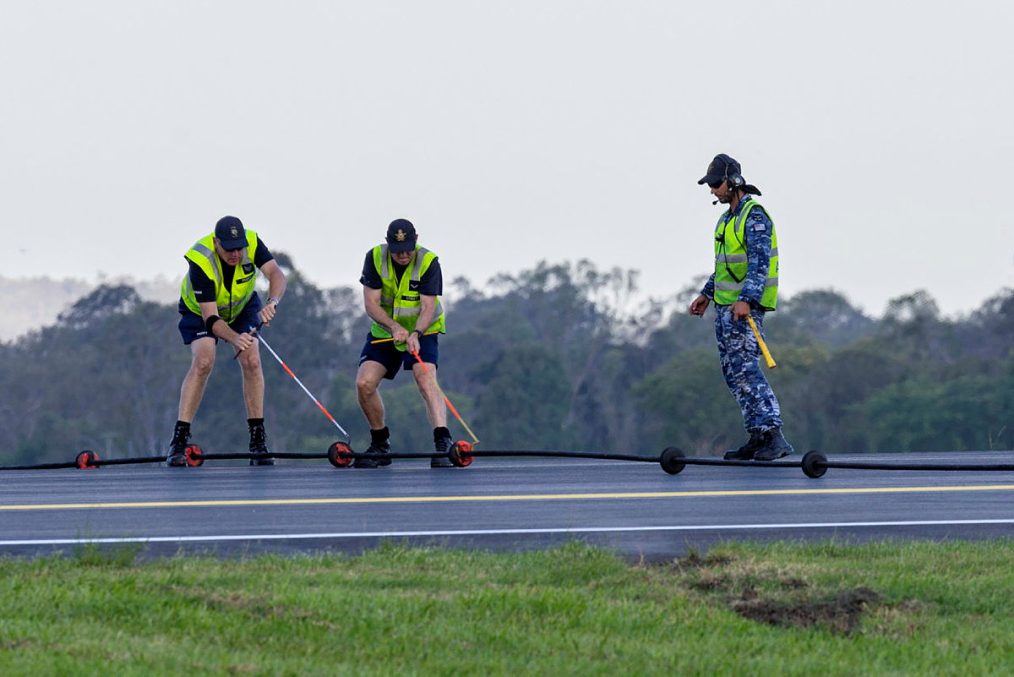What happens when poorly trained North Korean soldiers are thrown into the brutal conflict between Russia and Ukraine? In this video, we dive into the shocking reality of North Korean troops sent to Kursk as part of Russia’s desperate war efforts. From language barriers and inadequate training to their unpreparedness for Ukraine’s battle-hardened forces, these soldiers face a terrifying fate. Watch as we uncover their struggles, fears, and the devastating consequences of their deployment.
Over the past decade, an average of 78 current and former Australian Defence Force (ADF) members have died by suicide annually. This harrowing statistic led to the establishment of the Royal Commission into Defence and Veteran Suicide in 2021, an effort to address the systemic challenges behind this national crisis.
In September, the commission released its final report, prompting the Albanese government to respond. Of the 122 recommendations made, the government has agreed, either fully or in principle, to 104, marking a significant step toward reform.
Prime Minister Anthony Albanese described the response as a historic opportunity to deliver enduring support for Defence personnel, veterans, and their families. But what does this response achieve, and where does it fall short?
Mental Health Challenges in the Military
More than 500,000 Australians have served or are currently serving in the ADF. Among active personnel, 22% report experiencing mental health disorders—a figure that increases to 46% for those recently transitioning out of full-time service.
The suicide rate for ex-serving women is more than double that of civilian women. Similarly, men discharged for medical reasons face a suicide risk nearly three times higher than their civilian counterparts. Alarmingly, the number of suicides among ADF personnel over recent decades far exceeds combat-related fatalities.
The reasons for these elevated suicide rates are complex. While deployment trauma is a factor, the royal commission highlighted systemic and cultural issues within the ADF. For instance, excessive “self-reliance,” often celebrated as a military virtue, can hinder help-seeking behaviour when taken to extremes.
Government Commitments
The government’s response includes several significant commitments:
- Co-Design Initiatives: Support programs and guidelines will be developed in collaboration with ex-service organizations, veterans, and their families, ensuring lived experience informs policy.
- Improved Professional Development: Enhanced military cultural competency training for health professionals and better trauma-informed practices aim to address the unique challenges faced by ADF personnel.
- Reducing Administrative Stress: Clearing the Department of Veteran Affairs’ (DVA) claims backlog is a priority, as delays have been a major source of stress for veterans.
- Addressing Military Sexual Violence: Establishing a new inquiry into sexual violence in the ADF reflects a commitment to addressing longstanding issues within the institution.
Missed Opportunities
However, the government has faced criticism for leaving key recommendations unaddressed. Notably, the recommendation to equalize compensation for veterans permanently injured during training with those injured in active service was rejected. This decision may inadvertently devalue the contributions of non-deployed service members, potentially exacerbating identity challenges and mental health issues.
Other key recommendations, such as aligning the DVA’s fee schedule with the National Disability Insurance Scheme to incentivize health-care providers, were deferred for further consideration. This delay could send a mixed message about the value society places on veterans’ care.
The response also lacked immediate commitment to bolstering research funding. While systemic issues require evidence-based solutions, the absence of a strong focus on research risks undermining long-term progress.
The Role of the Taskforce
To address the deferred recommendations, the government has established a taskforce within the Department of the Prime Minister and Cabinet. While this signals a high level of attention, questions remain about its leadership, timeline, and accountability.
Deputy Prime Minister Richard Marles has emphasized that “Defence’s greatest asset is their people.” However, funding models and timelines must align with this principle to ensure meaningful reform.
Moving Forward
The royal commission has provided a roadmap for addressing the systemic and cultural issues contributing to veteran suicide. While the government’s response demonstrates a strong commitment to many of these recommendations, significant challenges lie ahead.
Implementing lasting reform requires balancing immediate needs with sustainable change and ensuring that the voices of Defence personnel, veterans, and their families remain central. Maintaining focus and accountability will be critical in preventing further tragedy and honouring the sacrifices made by Australia’s service members.
Open Arms – 1800 011 046 – provides 24-hour free and confidential counselling and support for current and former ADF personnel and their families. The Defence all-hours Support Line – 1800 628 036 – is a confidential telephone and online service for ADF members and their families. Lifeline is available on 13 11 14
We are losing our Australian identity.
Outrage has been sparked after a major Australian pub owner banned Australia Day celebrations in its venues.
Australian Venue Co, owner of more than 200 pubs and bars including many iconic venues in Victoria, NSW, Queensland and South Australia, has directed managers not to allow flag-wavers to celebrate in its establishments on January 26.
Australian Venue Co owns 60 venues in Victoria, 90 in Queensland, about 20 in South Australia and 10 in Sydney.
“Australia Day is a day that causes sadness for some members of our community, so we have decided not to specifically celebrate a day that causes hurt for some of our patrons and our team,” an Australian Venue Co spokeswoman told the Herald Sun.
Queensland senator Matt Canavan said the private company was acting as “moral guardians”.
Appearing on the Today show, MR Canavan acknowledged there are differing views on January 26.
“Get off their moral high horse. They’re a pub, for God’s sake They deal in alcohol … I mean, let people have a good time at a pub,” the senator said.
Sky News host Paul Murray joined Mr Canavan in having a crack at Australian Venue Co’s decision.
“While they’re saving people ‘hurt’ by not marking Australia Day, you will still be able to lose your life savings in a poker machine on January 26,” he said.
“It’s up to you. You’ve got lots of ways you can respond to this and all of them should be respectful … But most importantly you can decide where your money goes.”
Former Victorian Premier Jeff Kennett called the decision “divisive” and “extraordinary”.
‘They are totally out of touch with the community,’ he said.
“If no one wants to participate in Australia Day celebrations at one of their venues that would be fine.”
ALL THE VENUES AFFECTED
Victoria
Anglers Tavern
Apollo Bay Hotel
Auburn Hotel
Ball Court Hotel
Beer DeLuxe Fed Square
Birallee Tavern
BrewDog Pentridge
College Lawn Hotel
Criterion Hotel
Eureka Hotel
Fairfield Park Boathouse
Fargo and Co
Flinders Hotel
Garden State Hotel
Golden Gate Hotel
Harlow
Holliava
Hopscotch
Hotham Hotel
Imperial Hotel Bourke St
Imperial South Yarra
Melbourne Public
Middle Park Hotel
Morris House
Perseverance
Prahran Hotel
Prince Alfred Hotel
Prince of Wales Hotel
Public House
Richmond Club Hotel
River’s Edge Events
Skinny Dog Hotel
State of Grace
Studley Park Boathouse
Swan Hotel
Terminus Hotel Abbotsford
The Bridge Hotel
The Crafty Squire
The Duke of Wellington
The Esplanade Hotel
The Exchange Hotel
The Gardiner Hotel
The Hawthorn Hotel
The Local
The Park
The Posty
The Provincial
The Smith
The Station Hotel
The Terminus Yarrawonga
The Victoria Hotel
The Wharf Hotel
Trinket
Village Belle Hotel
West Beach Pavilion
Yarra Botanica
Yarra Valley Grand Hotel
Queensland
Airlie Beach Hotel
Barron River Hotel
Beenleigh Tavern
Berserker Tavern
Birkdale Gardens Tavern
Bonny View Hotel
Boomerang Hotel
Bribie Island Hotel
Brighton Hotel
Browns Plains Hotel
Burleigh Town Hotel
Cannon Hill Tavern
Capella Hotel
Carindale Hotel
Chancellors Tavern
Cleveland Sands Hotel
Cleveland Tavern
Club Hotel Waterford
Commercial Hotel
Commonwealth Hotel
Coomera Lodge Hotel
Crown Hotel
Currimundi Hotel
Diamonds Kallangur
Diamonds Tavern Varsity Lakes
Dunwoody’s Hotel
Empire Alternacade & Events
Enigma
Everton Park Hotel
Ferry Road Tavern
Finn McCool’s Brisbane
Finnigan’s Chin Keperra
Fitzy’s Loganholme
Fitzy’s Waterford
Friday’s
Grafton Hotel Edmonton
Grand Hotel Motel
Hey Chica
Hope Island Tavern
Hotel Allen
Hotel HQ Underwood
Inala Hotel
Jindalee Hotel
Jubilee Tavern
Kings Beach Tavern
Koala Tavern
Kooyong Hotel
Lefty’s Music Hall
Leichhardt Hotel
Lulu Rooftop Bar
Mango Hill Tavern
Mansfield Tavern Brisbane
Mihi Tavern
Morayfield Tavern
Mount Sheridan Tavern
Newnham Hotel
Old Bundy Tavern
Palm Cove Tavern
Port Office Hotel
Portadown Hotel
Redcliffe Tavern
Reef Gateway Hotel
Regatta Hotel
Retro’s Brisbane
Riverland Brisbane
Royal Hotel Nundah
Royal Mail Hotel
Runaway Bay Tavern
Salisbury Hotel
Sands Tavern
Springlake Hotel
Sundowner Hotel Motel
Surfair Beach Hotel
Taigum Tavern
The Anthill
The Boundary Hotel
The Club Hotel Gladstone
The Commonwealth Hotel Roma
The Kenmore
The Local Tavern
The Lord Alfred Hotel
The Mansfield Townsville
The Metropolitan Hotel
The Ox
The Strand Hotel
The White Bull Tavern
The Wickham
Tom’s Tavern
Trinity Beach Tavern
Wallaby Hotel
Waterloo Hotel
Woodpecker Bar & Grill
NSW
Albion Hotel
Beer Deluxe Albury
Beer Deluxe T2
BrewDog South Eveleigh
Bungalow8
Cargo
Henley’s Kitchen & Bar
Kingsleys Woolloomooloo
Little Pearl Bar
North Byron Hotel
Salt Bar
The Bended Elbow
The Rook
The Winery
Untied
South Australia
Avenues Café & Bar
Brighton Metro Hotel
Hampstead Hotel
Mick O’Shea’s Hotel
Naracoorte Hotel
Parkside Hotel
Payneham Tavern
Robe Hotel
The Colonist
The Duck
The Grand Junction Tavern
The Hope Inn
The Mile End Hotel
The Unley
The West End Tavern
Victoria Hotel
Waterloo Station Hotel
Western Tavern
Sunni rebels are in the process of toppling the Assad regime in Syria, taking over city after city. Iran and Russia are not able to help. This is totally changing the Middle East and only due to Israel decimating Hezbollah, Iran’s proxy in Lebanon. What only weeks ago was feared as an Iranian dominated Middle East, it looks like everything is now changing.
Frontline – Ray Payne OAM
In a staggering decision that undermines one of the most significant cultural traditions in Australia, Australian Venue Co (AVC), the nation’s second-largest pub group, has announced a ban on Australia Day celebrations across its 200+ venues in 2025. This move, citing “sadness” and “hurt” among some patrons, is a slap in the face to the overwhelming majority of Australians who cherish this day as a celebration of our national identity, pride, and heritage.
AVC, owned by the Asian private equity group PAG, claims to celebrate “what makes Australia great” year-round. Yet, by banning Australia Day celebrations, they actively deny the very values that unite us as a country—mateship, resilience, and community. This decision is not just disappointing; it’s an affront to millions of Australians who hold this day dear.
The spokesperson for AVC rationalized the decision, stating that the day causes hurt for some patrons. While it’s essential to acknowledge history and work toward reconciliation, let’s not forget that Aboriginal and Torres Strait Islander people represent 3.2% of the population—and not all of them oppose Australia Day. This move, therefore, seems less about genuine inclusion and more about appeasing a vocal minority at the expense of national unity.
If AVC cannot respect the spirit of Australia Day, then Australians should make their voices heard by choosing to celebrate elsewhere. Let us call for a permanent boycott of all Australian Venue Co pubs and bars. These establishments rely on the patronage of ordinary Australians—the very people whose values and traditions they now disregard.
Let’s remind these “woke” directors of the strength of public sentiment. Imagine thousands of proud Australians arriving at AVC venues wearing Australian flags, T-shirts, hats, and dresses on January 26, celebrating the day in style despite their attempt to silence us. Such a show of unity would send a clear message: We love our country, our history, and our right to celebrate Australia Day.
This decision by AVC follows a similar stance from Woolworths Group, which earlier this year refused to stock Australia Day merchandise. These actions represent a dangerous trend where corporate interests dictate cultural shifts, sidelining the voices of everyday Australians.
Australia Day is about much more than the date—it’s about the shared experiences, achievements, and resilience of all Australians. It’s a day to celebrate our diverse yet united nation and reflect on how we can move forward together.
By erasing this tradition, businesses like AVC risk alienating the very communities they serve. Australians must stand firm, reject this divisive decision, and protect our right to celebrate our country and its achievements.
Australia Day is not just a holiday; it’s a part of who we are. Let’s not let corporate agendas take that away from us.
.
Photo: Personnel from No 23 Squadron Cable Crew prepare the mobile aircraft arrestor system at RAAF Base Amberley, Queensland. LAC Campbell Latch
Defence Release
Combat Support Group (CSG) is demonstrating what agility looks like as it rolls out next-generation Mobile Aircraft Arrestor Systems (MAAS) across Australia and trains in using them as a deployable asset to recover aircraft anywhere Air Force might land.
Ground engineering personnel from CSG recently sought assistance from RAAF Base Amberley Army engineers from 6 Engineering Support Regiment (6ESR) and installed a MAAS at the base for training and trial purposes.
CSG ground engineer Flight Lieutenant Jayesh Patel said 6ESR provided earthmoving equipment to help install deadman anchors for the MAAS on either side of the runway.
“Our own airfield engineering unit, 65 Squadron, is also able to assist installing the MAAS when required, but having Army lend a hand adds to our integrated approach to defence and provided valuable experience for their operators as well,” Flight Lieutenant Patel said.
MAAS is designed to be mobile and can be installed with a crew of six and does not need earthmoving machinery to be installed at a remote location. Deadman anchors, installed with assistance of machinery, are used in certain soil conditions, but equally effective anchors may also be deployed by the crew.
The agile nature of the transportable system is enhanced by its ability to be manually installed within a few hours.
With four units and supporting equipment able to fit into a C-17A Globemaster III hold, the MAAS can be deployed efficiently anywhere in the world and installation can occur without any airfield operational impact.
By the end of this year, Air Force will have six systems in place at various bases, ready for deployment at a moment’s notice.
Concrete anchor points will be constructed at Air Force’s northern bases to enable MAAS to be placed more quickly, removing the need for the installation of temporary anchor points.
The MAAS’ arrestor cables are adjustable to suit the airstrip, making the asset a complete package for recovering aircraft that may return from operations with a defect or where damaged runway surfaces prevent safe landing.
“The MAAS adds to Air Force capability and responsiveness by having a system that provides the same level of performance as a permanent system, while remaining easily deployable,” Flight Lieutenant Patel said.
The Australian Defence Force (ADF) has selected Damen Shipyards Group’s LST100 as the preferred design for its Landing Craft Heavy program. This decision is a critical part of Australia’s National Defence Strategy, which focuses on enhancing littoral manoeuvre and long-range strike capabilities. The LST100 will provide greater payload capacity, range, and endurance than the current LCM-8 landing craft, supporting the deployment of heavy military assets like Abrams tanks and HIMARS. Set to enter construction in 2026, the LST100 will strengthen Australia’s amphibious operations and improve interoperability with other naval assets, ensuring greater operational flexibility across military and humanitarian missions.
Perth Now
Geoff Clark, once one of Australia’s most prominent Indigenous leaders, has been sentenced to six years and two months in jail after embezzling nearly $1 million from Aboriginal community organisations he once headed. The convictions have sparked renewed calls for a comprehensive forensic audit of Aboriginal land councils and grants to ensure accountability and transparency.
Clark, 72, the former national chair of the defunct Aboriginal and Torres Strait Islander Commission, appeared calm as County Court Judge Michael O’Connell handed down the sentence on Friday. Clark will serve a minimum of three years and nine months before being eligible for parole. He attended the sentencing via video link from prison, where he has been held since September when his bail was revoked.
“You stole on multiple occasions in a variety of ways to personally benefit and strengthen your power in the community,” Justice O’Connell said, describing Clark’s actions as “morally reprehensible” and a betrayal of the trust placed in him.
Over the course of 17 years, Clark misappropriated over $922,000 through a series of fraudulent activities targeting Kirrae Whurrong Community Inc, Maar Land Council, Framlingham Aboriginal Trust, and the estate of Robert Clarke, a Framlingham elder. A portion of these funds—more than $400,000—was used to cover Clark’s personal legal fees related to historical rape allegations, an unfair dismissal case, and a 2002 police obstruction charge at Warrnambool’s Criterion Hotel.
Further investigations revealed Clark had:
- Directed community organisations to pay $56,000 for expenses on his personal properties.
- Pocketed nearly $15,000 in rent intended for Kirrae Whurrong Community Inc.
- Accepted unlawful payments from eel fishermen.
- Undervalued shares from Framlingham Aboriginal Trust by at least $47,000 for personal gain.
Clark was convicted on 25 charges, including 17 counts of theft, financial deception, perjury, and knowingly dealing with proceeds of crime. The convictions, reached across three secret trials between December 2023 and May 2024, were suppressed until September.
The case has reignited concerns about governance within Aboriginal organisations. Advocates argue Clark’s crimes highlight the urgent need for a nationwide forensic audit of Aboriginal land councils and grant programs to uncover potential misuse of funds and restore community trust. Critics assert that a lack of oversight has allowed systemic exploitation to go unchecked for too long.
“The theft of resources meant to uplift Indigenous communities is devastating,” said an advocacy spokesperson. “We need stringent audits and reform to prevent such abuses from happening again.”
Jeremy Clark, 51, Geoff Clark’s son, received a suspended two-year sentence after being found complicit in the theft of over $231,000 to cover his father’s legal fees. Jeremy also pleaded guilty to fraudulently obtaining a $10,780 federal grant.
Justice O’Connell acknowledged Geoff Clark’s past contributions as a national advocate for Indigenous rights but emphasized the gravity of his offenses. “The balance of what you have stolen was money your community sorely needed,” he said. “There is no evidence of remorse.”
While Clark’s advanced age and health factored into his sentencing, community leaders are demanding not just punitive measures but systemic change. The push for forensic audits of Aboriginal councils and grants underscores the need for greater transparency in managing resources meant to benefit Indigenous Australians.
Who is Dr. Adi Patterson?
Dr. Adi Patterson, Vice-Chancellor, is internationally acclaimed for his leadership in advancing nuclear science and technology. His pioneering work at the intersection of public science investment and practical innovation has had a transformative impact on health, industry, and the environment. If you’re not familiar with his contributions, do yourself a favour and look him up – there’s a wealth of information online.
Credit where it’s due: Dan Repacholi showed respect by allowing Dr. Patterson to fully respond to his questions without interruption. A refreshing contrast to Bowen and others, who seem quick to dismiss differing viewpoints.
One day, Australians might wake up to the reality that Bowen and his colleagues have misled the nation about our energy future—hopefully, before it’s too late.
In my view, nuclear energy is the long-term solution for meeting our base-load energy needs. While I recognize that our energy future will involve a mix of sources, it’s unrealistic to believe renewables alone can meet our demands, as Labor continues to insist.









